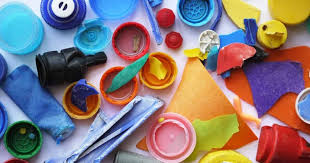Plastic is everywhere. From the moment we wake up to the time we go to bed, plastic products play a crucial role in our daily lives. This versatile material is found in everything from toothbrushes to smartphones, making it indispensable in modern society. But have you ever wondered about the story behind these plastic products? How they are made, their impact on various industries, and the environmental concerns they raise?
In this blog post, we’ll take you behind the scenes to explore how plastic products shape our daily lives.
The History of Plastic Evolution and Impact
Plastic has a fascinating history that dates back to the early 20th century. The first synthetic plastic, Bakelite, was invented by Leo Baekeland in 1907. This invention marked the beginning of a new era, where plastic began to replace traditional materials like wood, metal, and glass. Over the decades, plastic evolved, giving rise to new types like polyethylene, PVC, and polystyrene. Each innovation brought new applications, making plastic an integral part of modern life.
The impact of plastic has been profound. It revolutionized manufacturing, making production faster and cheaper. Plastic products became ubiquitous, from household items to industrial components. Despite its many benefits, plastic also brought challenges, particularly concerning environmental pollution and health risks.
The Production Process From Raw Materials to Final Product
The production of plastic products is a complex process that involves several stages. It all begins with raw materials, primarily derived from petroleum and natural gas. These materials undergo a series of chemical reactions to form polymers, the building blocks of plastic.
Once the polymers are created, they are sent to plastic molding companies, where they are processed into final products. The most common methods include injection molding, blow molding, and extrusion. Each technique has its advantages, depending on the type of product being manufactured.
For instance, injection molding is ideal for producing intricate shapes with high precision, while blow molding is perfect for creating hollow objects like bottles. Extrusion, on the other hand, is used to make continuous shapes like pipes and sheets.
Innovations in Plastic Manufacturing Sustainable Practices and Material Alternatives
In recent years, there has been a significant shift towards sustainable practices in plastic manufacturing. Companies are increasingly adopting eco-friendly methods to reduce their environmental footprint. One such innovation is the use of biodegradable plastics, which break down more easily in the environment.
Another approach is recycling, where plastic waste is collected and processed into new products. Plastic molding companies are investing in advanced recycling technologies to make this process more efficient and cost-effective. Additionally, there is a growing interest in using alternative materials like bioplastics, which are made from renewable resources such as corn starch and sugarcane.
These innovations are crucial in addressing the environmental challenges posed by plastic, ensuring a more sustainable future.
The Role of Plastic in Various Industries Health, Technology, and More
Plastic plays a pivotal role in various industries, contributing to advancements in health, technology, and beyond. In the healthcare sector, plastic is used to make a wide range of medical devices, from syringes to prosthetics. Its versatility and durability make it an ideal material for these applications.
In the technology sector, plastic is essential in the production of electronic devices. From the casing of smartphones to the components inside computers, plastic is integral to modern technology. Its lightweight nature and ability to be molded into complex shapes make it indispensable in this industry.
Other industries that rely heavily on plastic include automotive, packaging, and construction. In each of these sectors, plastic offers unique benefits that enhance functionality, safety, and aesthetics.
Environmental and Health Concerns The Dark Side of Plastic
While plastic has many advantages, it also poses significant environmental and health concerns. One of the most pressing issues is plastic pollution. Every year, millions of tons of plastic waste end up in the oceans, harming marine life and ecosystems. This pollution also affects human health, as microplastics can enter the food chain and accumulate in our bodies.
Another concern is the production of plastic itself. The process involves the use of harmful chemicals, which can release toxic emissions into the air and water. These emissions contribute to air pollution and pose health risks to workers in plastic companies and nearby communities.
Addressing these concerns requires a multifaceted approach, involving stricter regulations, better waste management practices, and increased public awareness.
Consumer Choices How Individuals Can Contribute to a More Sustainable Future
Consumers have a crucial role to play in addressing the environmental challenges posed by plastic. By making informed choices, individuals can contribute to a more sustainable future. One way to do this is by reducing plastic use. Opt for reusable items like shopping bags, water bottles, and containers instead of single-use plastics.
Another way is to support companies that adopt sustainable practices. Many plastic molding companies are investing in eco-friendly technologies and materials. By choosing products from these companies, consumers can encourage the industry to move towards more sustainable practices.
Recycling is also essential. Make sure to dispose of plastic waste properly and participate in local recycling programs. Educate yourself about the different types of plastics and how they can be recycled.
The Future of Plastic and Our Everyday Lives
Plastic products have become an integral part of our daily lives, offering countless benefits and conveniences. However, they also pose significant environmental and health challenges. By understanding the history, production processes, and impact of plastic, we can make more informed choices and contribute to a more sustainable future.
The future of plastic lies in innovation and sustainability. Advances in recycling technologies, the use of alternative materials, and the adoption of eco-friendly practices are paving the way for a more sustainable future. As consumers, we have the power to drive this change by making conscious choices and supporting sustainable practices.
Stay in touch to get more news & updates on News Break Blog!

